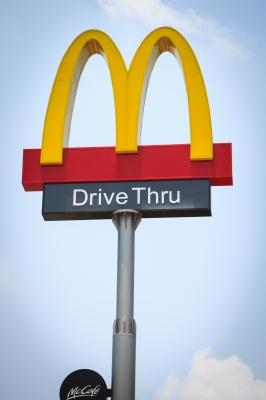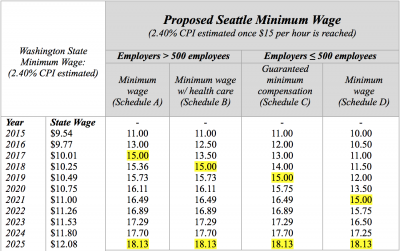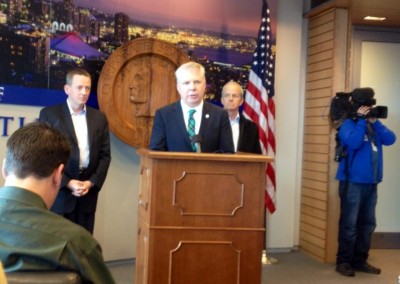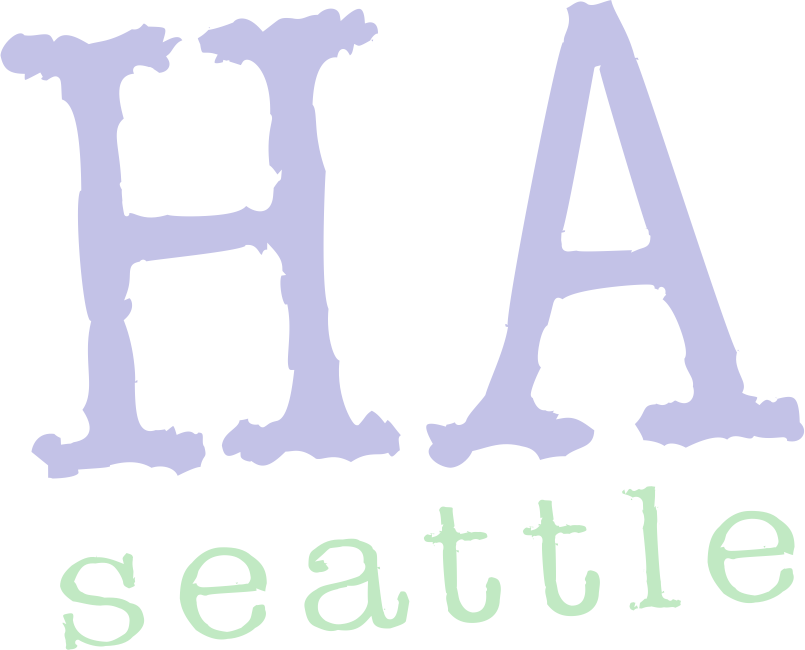The Seattle Times editorial board (many of whom’s members don’t actually live in Seattle) weighs in on Proposition 1, which would create a Seattle Park District to manage and fund the city’s parks and recreation facilities.
SEATTLE loves its parks, and should have access to beautiful, safe and well-maintained urban green spaces.
Yes we do!
But in the name of good parks, the Seattle City Council is asking voters to give them a blank check, with increased power and weaker oversight.
We just don’t want to pay for them!
Citizens should reject Proposition 1, the Seattle Park District measure. This is not merely a replacement for the existing parks levy, which citizens have generously passed every six years. (Currently, property owners pay about 20 cents per thousand dollars of assessed value per year — or about $88 on a home valued at $440,000.)
It isn’t? Then I suppose in the very next sentence you are going to effectively describe exactly what Proposition 1 is:
As pro-parks community activist Gail Chiarello so effectively describes Proposition 1: “It’s pretending to be a Bambi, when it’s really a Godzilla.”
Um, what? I’m pretty sure that’s a non sequitur.
With the support of Mayor Ed Murray, Proposition 1 proposes a new, permanent taxing authority controlled by the City Council. Collections in 2016 would start at a total of 33 cents per $1,000 of a home’s assessed value (about $145 on a home worth $440,000), but the council could more than double that amount to 75 cents per $1,000, or $330 per year — without ever having to check with voters.
That’s not entirely true. Once the initial levy rate is set, the parks district would be subject to the same absurd one percent annual cap on regular levy revenue growth that Tim Eyman’s Initiative 747 imposes on all taxing districts. It is unclear to me whether the Parks District would be born with banked levy capacity up to the maximum revenue that could have been raised under the 75 cent per $1,000 statutory cap at the time of the initial levy, but even if so, that banked capacity would not grow with property valuations. In fact, since property values generally appreciate at a rate much faster than 1 percent a year, the actual maximum parks district levy rate per mille will inevitably decrease over time without a voter-approved lid lift.
Either the editors are too stupid to understand that, or they are engaging in dishonest scaremongering, pure and simple.
Under state law, this district cannot be dissolved by a public vote. Neither would citizens be able to file initiatives against decisions they disagree with.
Which is true. But citizens already can’t file initiatives against parks decisions now! The mayor proposes and the council amends and adopts parks appropriations through the annual budget process. City appropriations are not subject to initiative or referendum. How the parks department subsequently goes about spending its appropriations is a purely administrative function. Administrative actions are also not subject to initiative or referendum.
Again, either the editors don’t understand the law, or they’re hoping you don’t.
Though a 15-member citizens’ committee would ostensibly provide oversight, the real control is with the City Council. The parks district essentially creates a shadow city government, run by the same Seattle City Council with the same borders as the City of Seattle, but with vast new authority to levy up to about $89 million in new annual taxes on the same Seattle taxpayers.
How is it a “shadow city government” if it is composed entirely of the actual city government? Its meetings and records are open to the public. Its members are directly elected by voters. What is shadowy about that.
In fact, if you read the interlocal agreement that is part of the formation of the Parks District, nothing at all changes about the way decisions are actually made. The city will continue to own the parks. The mayor will continue to propose parks budgets. The council will continue to amend and approve parks budgets (before passing it on to itself in the guise of the Parks District for a pro forma vote). And the city’s parks department will continue to operate the parks on behalf of the district. Other than adding a citizens oversight committee, the only thing that substantively changes is the taxing authority. Nothing else.
There are not enough safeguards to stop the council from diverting general funds to other causes, such as sports arenas.
No safeguards except, you know, the ballot, the same safeguard that already stops the council from diverting funds to unpopular causes. These are elected officials. They answer to voters. That’s the safeguard: democracy.
(Also, “sports arenas?” Really? Now they’re just making shit up. In editorial board interviews and other forums, Parks District opponents have gone as far as to raise the specter that a Parks District could build an airstrip at Cal Anderson Park! That’s how stupid these sort of paranoid fantasies are.)
Proponents promise yearly department audits, but only after the measure becomes law.
Because you can’t audit something that doesn’t exist. Duh-uh.
Why wait? The city should conduct a robust, independent performance and financial audit before even attempting to ask voters to trust them and sign a blank check.
The office of the Washington State Auditor conducts annual financial and accountability audits of the city—including the Parks Department—the results of which are all available online. There are no outstanding negative findings regarding parks operations. As for a performance audit, it couldn’t hurt; but neither have the state’s performance audits proven to help all that much either.
Citizens deserve to know how funds have been used so far, and how the city might invest limited parks revenue more wisely.
See, this is really the heart of the disagreement here. The editors believe that parks revenue should be limited, whereas Mayor Murray and the council disagree. All their talk about accountability is bullshit. What they are really arguing for is more austerity.
• According to The Trust for Public Land, Seattle Parks and Recreation is ranked second in the nation for the number of employees per 10,000 residents among the nation’s 100 most populous cities. City spending on parks ranks fourth in the nation. Yet, it faces a daunting maintenance crisis that has left some buildings dilapidated, pools unusable, bathrooms dank and even allowed a broken pump at Green Lake to leak raw sewage.
Shorter Seattle Times: It’s all the fault of those greedy, lazy parks employees!
To be clear, the Parks Department has eliminated 142 positions since 2008, about 10 percent of its workforce. Further, Seattle Parks & Recreations is almost unique in the nation in that it encompasses community centers as well as parks, thus skewing our employee per resident and revenue per resident numbers upwards. Indeed, if you read the TPL report in its proper context (instead of cherry-picking data and deliberately presenting it out of context like the editors do), what you see is Seattle’s parks rankings slipping year over year compared to similar-size cities, do to our lack of investment.
So let’s be honest. One of the reasons the Seattle Times consistently opposes raising taxes (again, taxes many of its non-Seattle-resident editors will never pay) is because they view every funding crisis as an opportunity to punish unionized public employees. Not enough money to meet our paramount duty to amply fund public schools? Fire teachers, cut their pay, and break their unions! Sales tax revenue shortfall threatening 600,000 hours of Metro bus service? Fire bus drivers, cut their pay, and break their unions! Initiative 747’s ridiculous 1 percent cap on annual regular levy growth strangling the city’s ability to pay for parks and other public services? Fire workers, cut their pay, and break their unions!
• Despite campaign rhetoric calling on voters to invest in fixing parks, Proposition 1 would dedicate only about 58 percent, or $28 million, of revenue in the district’s first year toward chipping away at the city’s $270 million maintenance backlog. Eight percent, or $3 million, would pay for maintaining facilities. More than a quarter of the budget is slated for new programs and expansion.
That’s 58 percent toward addressing the maintenance backlog and 8 percent toward avoiding adding to it. Yes, a big chunk of the remainder goes to “expanding” programs… but only within the context of several years of program cuts. For example, we’re talking about restoring community center hours and routine park maintenance and service that had been cut during budgetary lean years. Over anything longer than a one-year time frame, that’s not an expansion.
As for new programs, the proposed budget would develop and maintain parks at 14 sites the city had previously acquired, but never had the funds to develop. Also a new program: performance monitoring! The editors oppose spending additional money on the exact sort of accountability they insist must be delivered before spending additional money! Imagine that.
Seattle needs to care for current assets before amassing more. It also ought to expand partnerships with nonprofits and private groups willing and ready to help sustain recreation programs.
Or, hell, why not just privatize?
Preserving parks is critical to quality of life and public health.
But paying for it is not.
The mayor and council members are understandably eager to create dedicated parks funding and free up room in limited levy capacity for other worthy programs, such as universal preschool. But they have failed to make a case for a Seattle Park District that gives elected officials so much additional, unfettered power to tax and spend.
Again, bullshit. The power isn’t unfettered and there’s zero loss of accountability. What the editors are really opposed to is “free[ing] up room in limited levy capacity for other worthy programs, such as universal preschool.” They want to drown city government in a bathtub.
By rejecting Proposition 1, voters send a strong message to city leadership: We love parks, but return with a levy or alternate measure that prioritizes park needs, holds officials more accountable and preserves citizen participation.
Actually, it would send the opposite and most obvious message: that we don’t love our parks. And they know that. But the anti-tax/anti-government/anti-Seattle editors just couldn’t give a shit.
Let’s be 100 percent clear: For all the over-the-top vilification, the proposed Seattle Municipal Parks District is little more than an accounting maneuver. For a hundred years, this latent taxing authority has been left untapped because a prosperous Seattle didn’t need it. But I-747’s ridiculous 1 percent cap (less than inflation let alone population-plus!) has left the city unable to grow revenues commensurate with its needs.
A parks district would provide a stable and adequate alternative revenue source while freeing up taxing capacity for other crucial services like universal pre-school. And it would leave the parks department just as accountable as it is now, if not more so.
What the Seattle Times is arguing for is what its editors always argue for: a slow and steady decline and erosion of the public sector. Tell them to go fuck themselves: Vote “yes.”




